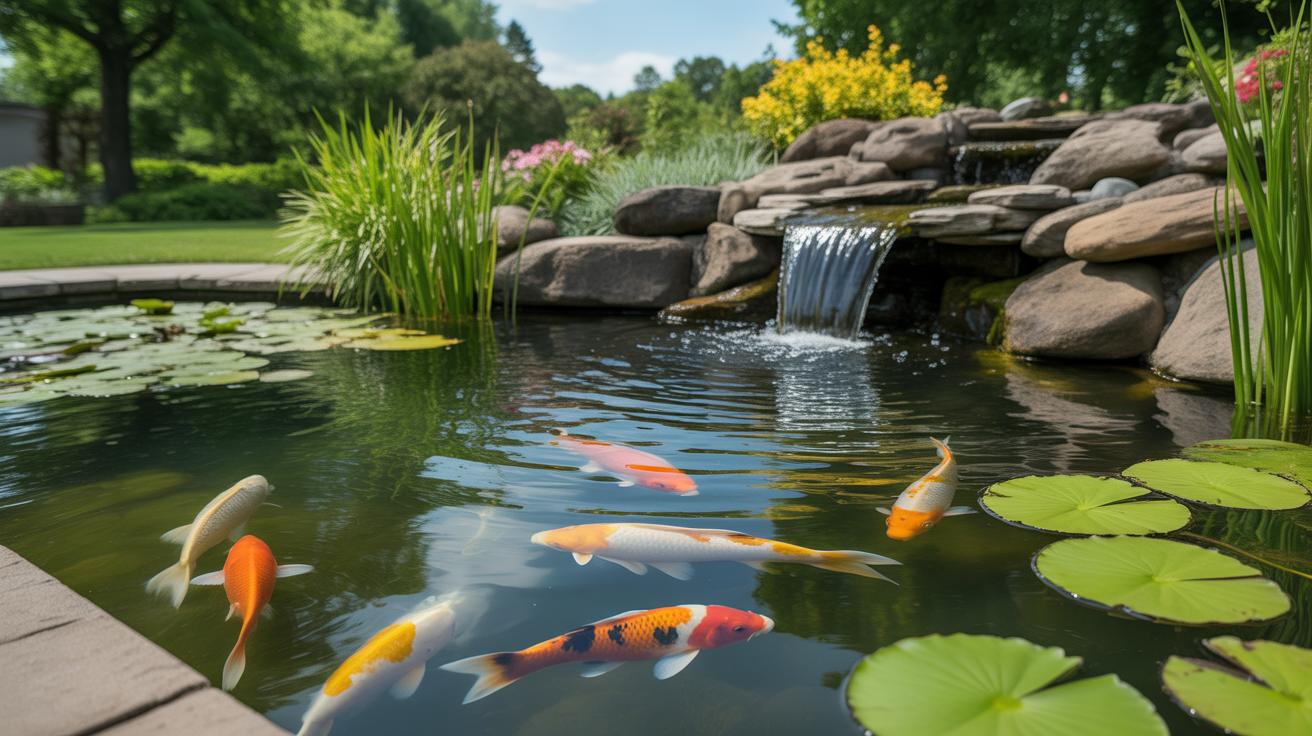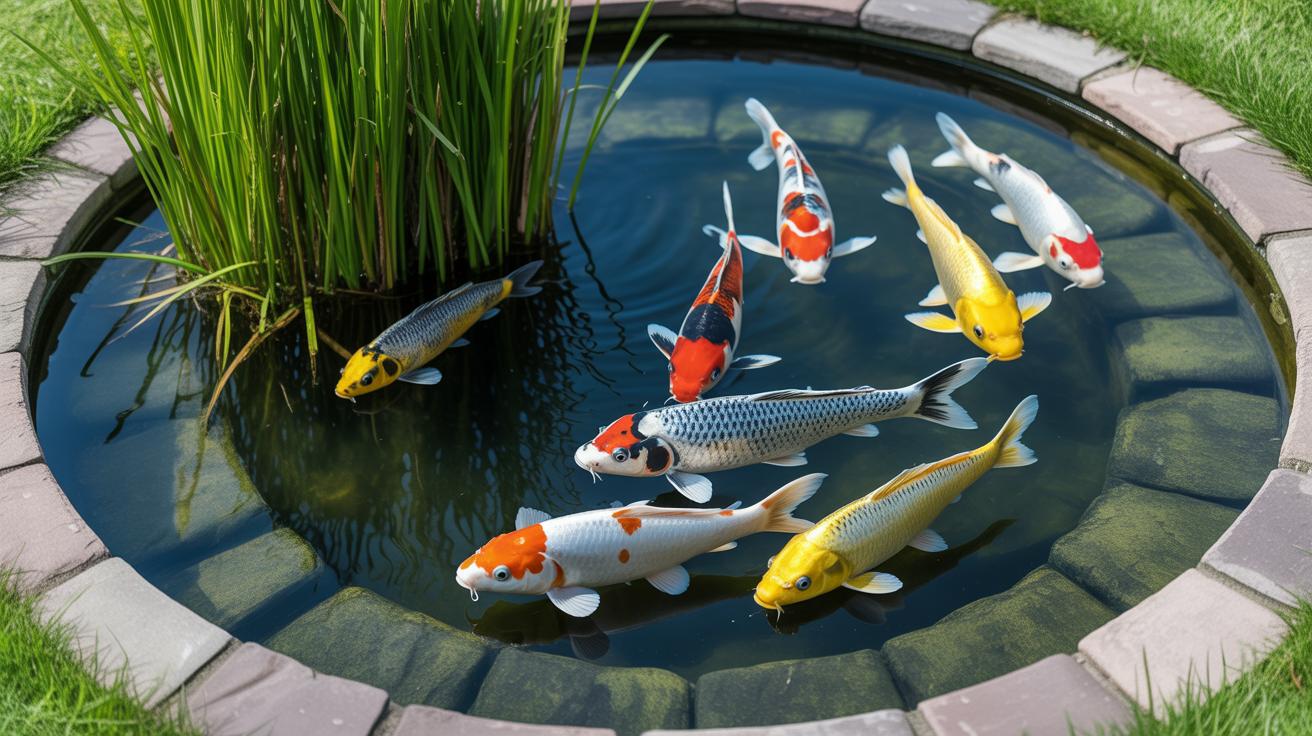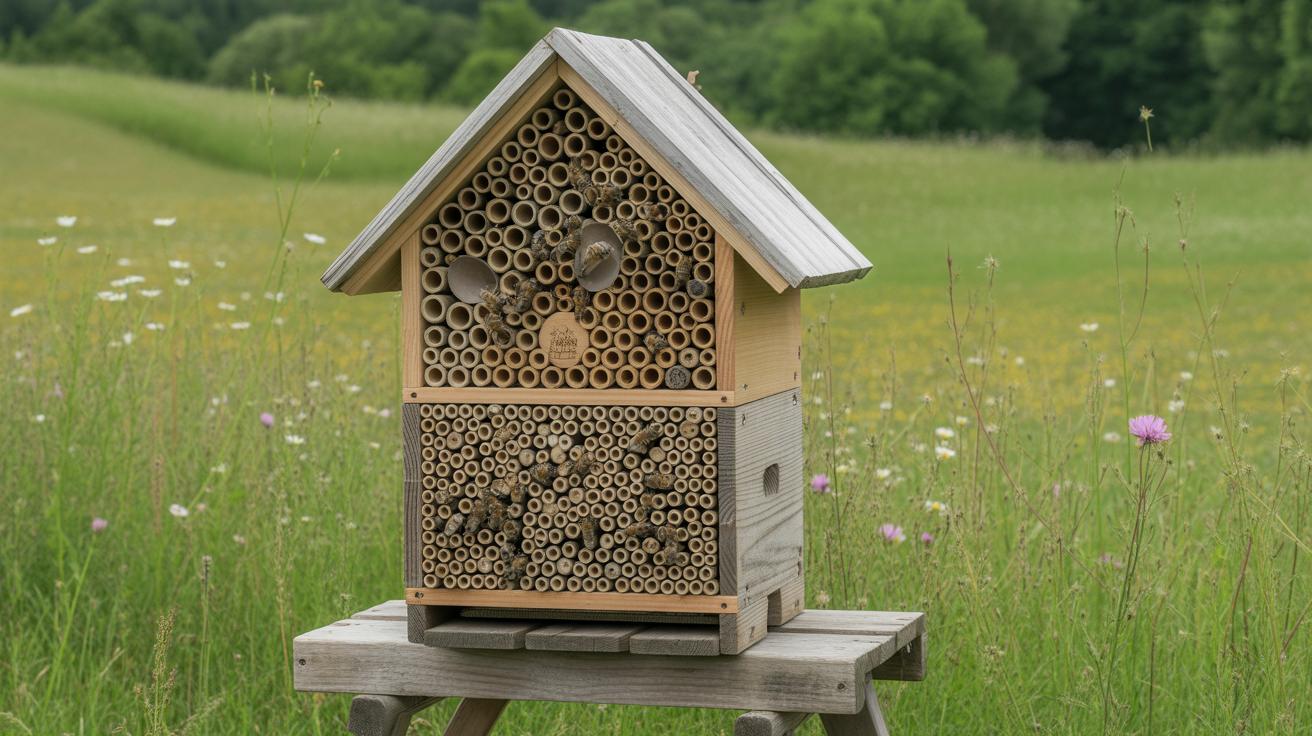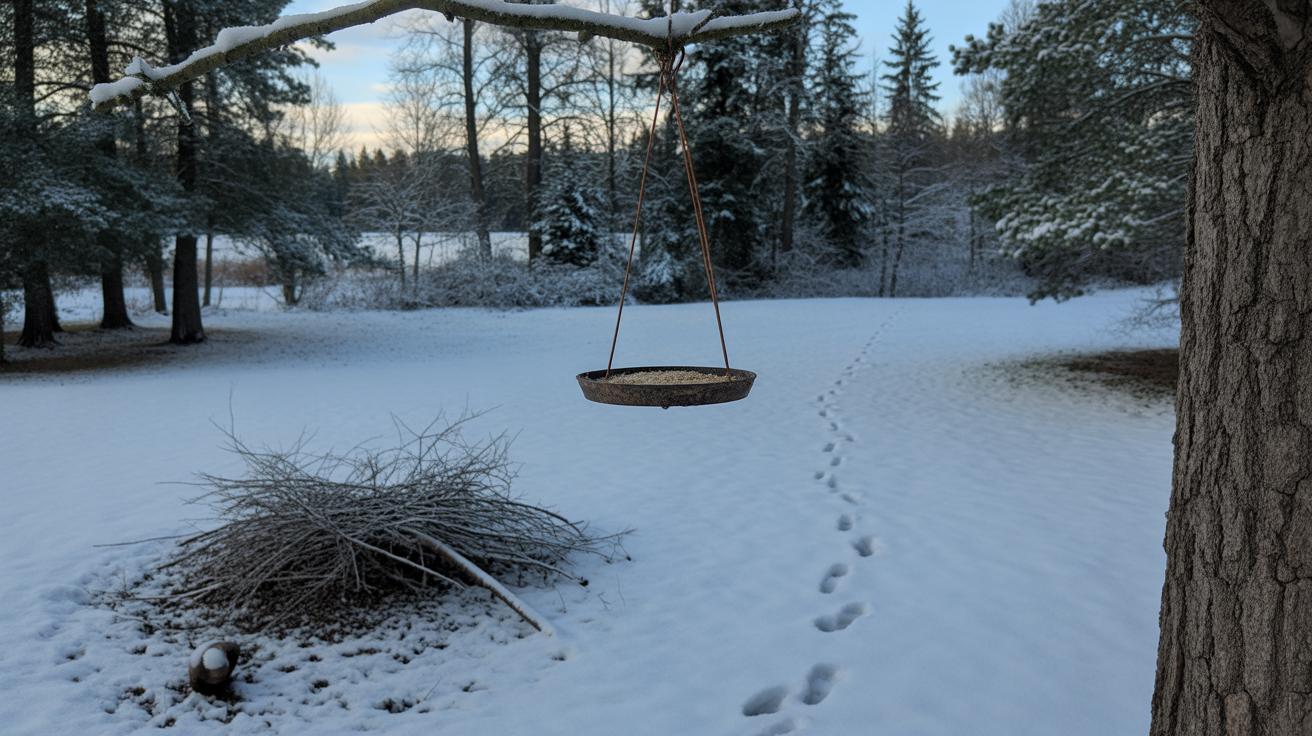Introduction
Creating and maintaining a successful fish pond ecosystem requires careful attention and knowledge. A thriving pond is not only attractive but supports healthy fish and plants, making your outdoor space enjoyable and vibrant. This article explores secrets to maintaining that balance in your fish pond.
From water quality to fish health, each element affects the whole ecosystem. By understanding key factors and practical steps, you can keep your fish pond clean, balanced, and full of life. The following chapters guide you through this process.
Choosing The Right Location For Your Fish Pond
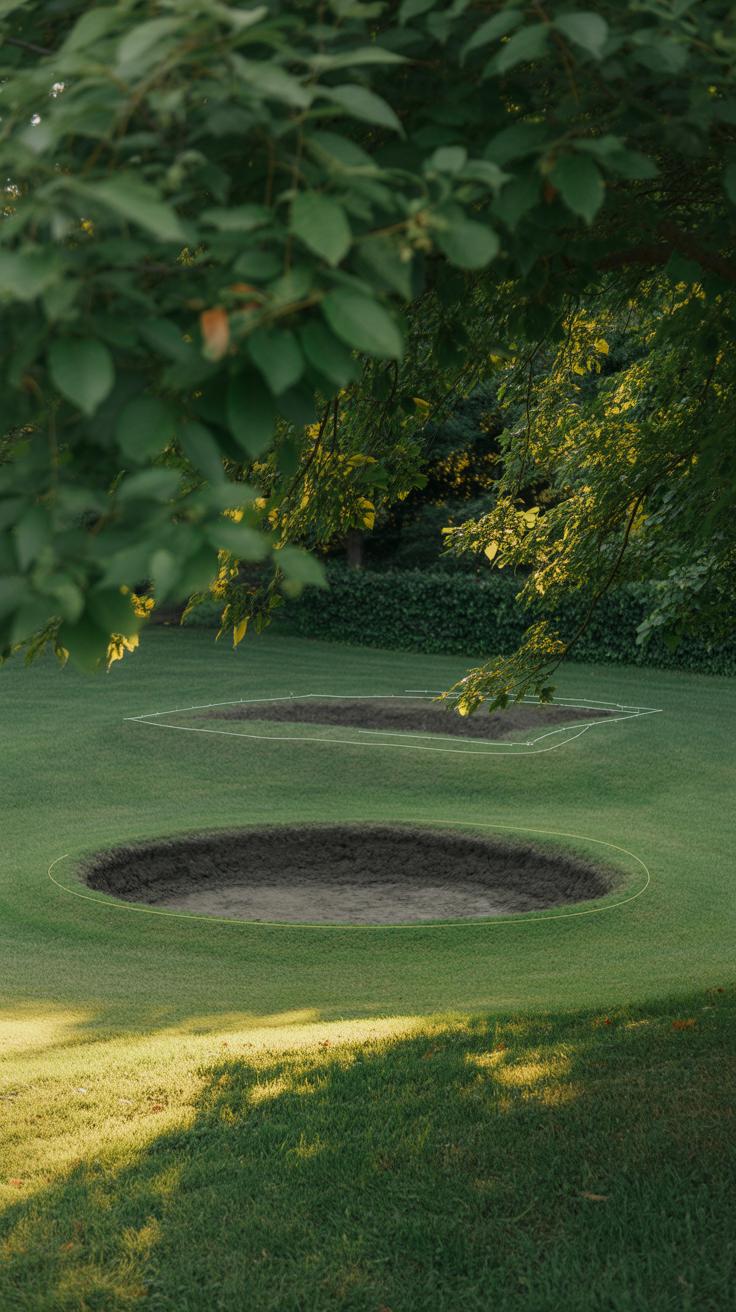
Finding the perfect spot for your fish pond takes a bit of thought. You want a location that offers a good mix of sunlight and shade. Too much sun can heat the water unevenly and encourage algae growth, which fish might tolerate up to a point, but it can get overwhelming. On the other hand, too much shade means cooler water and fewer plants to oxygenate the pond. I’ve seen ponds where the fish seem sluggish simply because the water never got enough light.
Think about positioning your pond where it receives morning sun and afternoon shade. This balance helps maintain a stable temperature—generally, fish prefer water that doesn’t swing wildly between hot and cold.
Wind and falling debris also play a role. Strong winds can stir up the water and throw leaves, pollen, or dirt into the pond. These can clog filters or settle as muck on the bottom, complicating maintenance. Placing your pond near natural windbreaks, such as hedges or fences, can reduce this. But be mindful of trees that drop lots of leaves or seed pods. Some light debris is okay, but if you find yourself constantly fishing out leaves, it might indicate the spot isn’t ideal.
- Look for partial sun exposure that warms the water without overheating it.
- Avoid heavy shade from large trees that block most light throughout the day.
- Choose a site sheltered from prevailing winds to prevent debris buildup.
- Don’t place the pond too close to trees with messy leaf drop.
Picking the right location feels a bit like a balancing act. You’ll probably have to compromise somewhere, but the key is to find a spot where sunlight and shelter work together to keep your pond’s environment steady and clean.
Selecting Fish Species For Your Pond
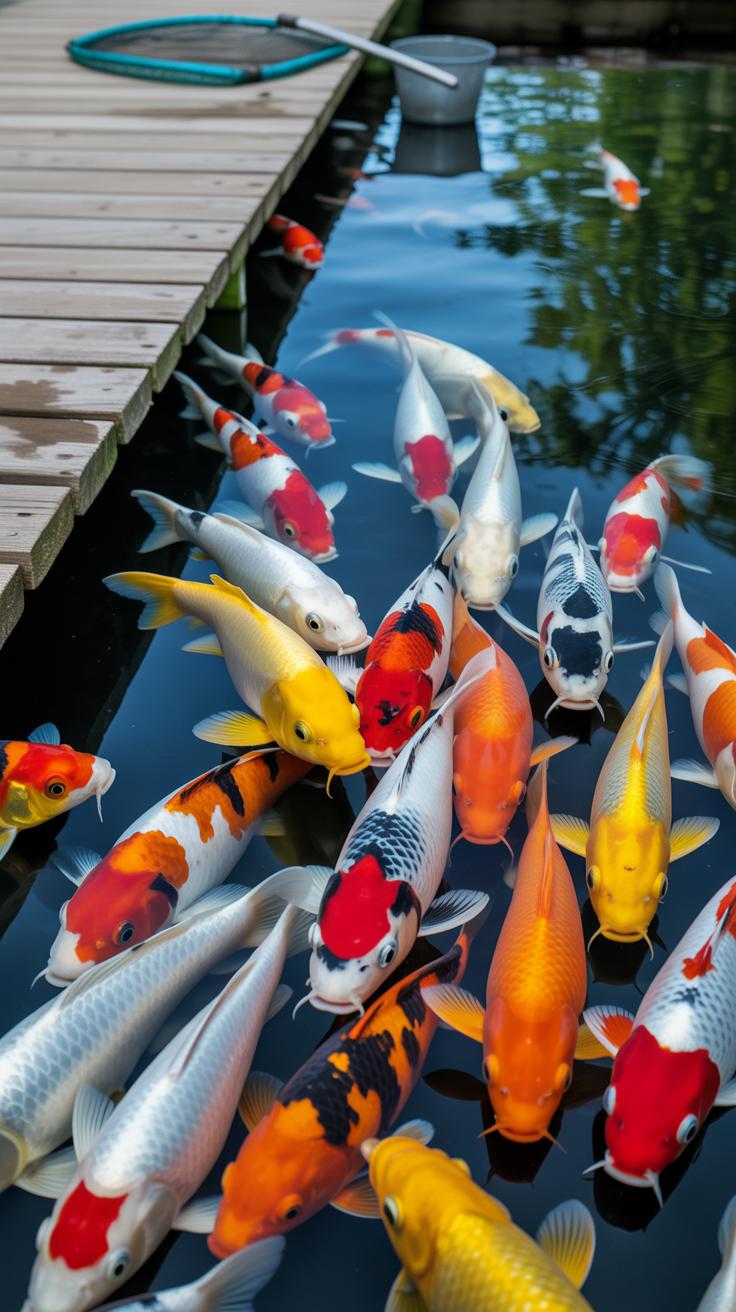
Picking fish for your pond depends a lot on the size of the pond and the climate where you live. It’s easy to feel overwhelmed with options, but it helps to start by considering space. A small pond, say under 500 gallons, won’t support large or many fish. Larger ponds can handle more variety and bigger species, but they still have limits.
Climate plays a big role too. Some fish tolerate cold winters better than others. If your pond freezes over, you’d want hardier species or ones that can survive lower oxygen levels. Warm climates can support fish that prefer stable high temperatures. So, matching fish to your environment is key to keeping them healthy.
Popular Fish Types To Consider
Common choices include carp, koi, goldfish, and bluegill. Koi are popular for their size and color, but they need space—around 1,000 gallons or more—for comfort. Carp are tougher and can deal with a variety of water conditions but they may disturb pond plants.
- Koi – flashy, need clean, oxygen-rich water, and space to grow.
- Carp – hardy, can handle temperature swings, but may uproot plants.
- Goldfish – small, adaptable, good for smaller ponds.
- Bluegill – a bit more sensitive, need moderate water temperatures.
Each species has its own quirks. For instance, koi eat a lot and can quickly foul water if the pond is undersized or filtering is weak.
Matching Fish To Pond Conditions
Water temperature guides your choice more than you might expect. Cold-water fish like koi can survive winter chill if the pond is deep enough, around three feet or more, where the water stays stable. Shallow ponds heat and cool rapidly, stressing fish.
You might want a few smaller fish if your pond is small and temperatures vary. They’ll cope better without needing constant care. If your pond holds more water and maintains stable temperatures, larger or more delicate species become options.
Also, think about fish behavior. Some are territorial or aggressive, which leads to stress or injury if the pond is cramped. It’s a bit like picking roommates—you want ones that can coexist peacefully.
Water Quality Management
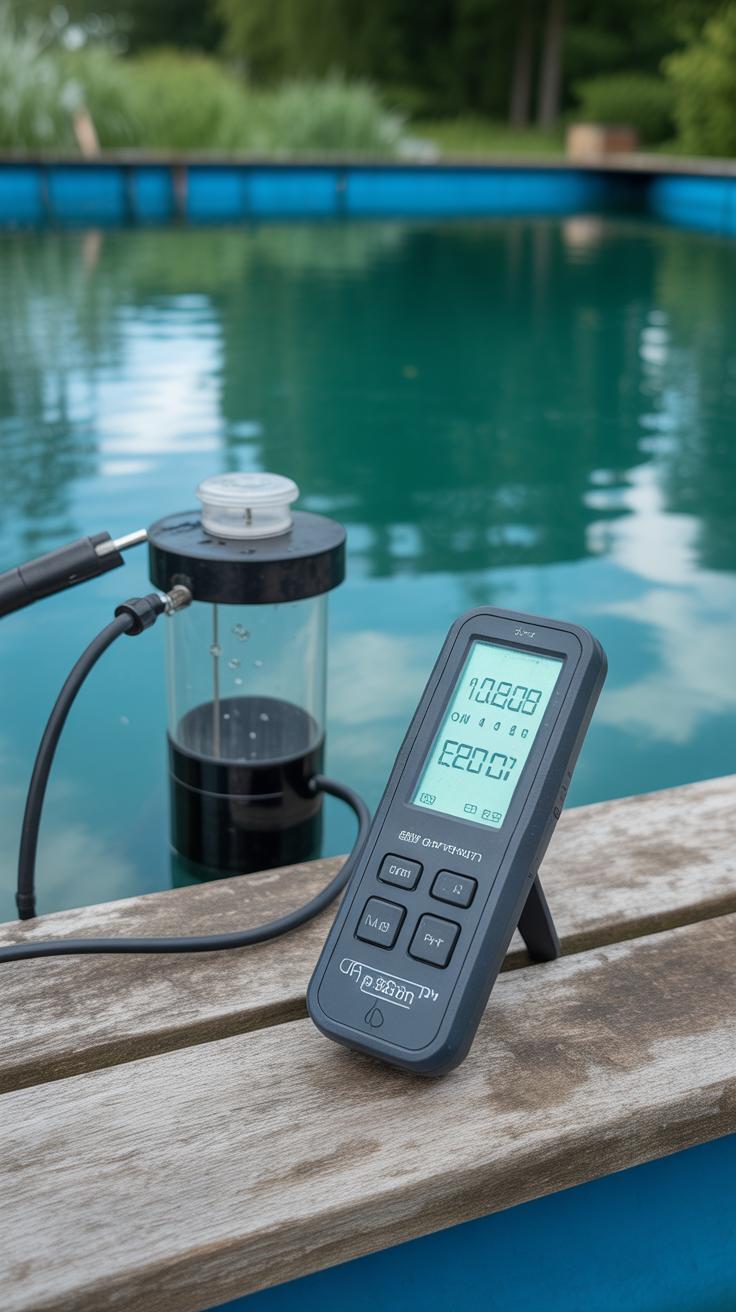
Water quality can make or break your fish pond’s health. You can pick the best fish and have a lovely setup, but if the water isn’t right, things can quickly go downhill. That’s why monitoring key factors like pH, ammonia, nitrite, and nitrate levels is critical. You don’t need to test every day, but regular checks—maybe once a week—will help catch issues before they spiral.
Testing is simple. You can buy test kits at most garden or pet stores. The kits usually come with strips or liquid reagents that change color based on the water’s chemistry. Don’t just focus on a single number. For example, pH might seem stable one day, but if ammonia is rising, it could signal trouble. Fish can tolerate a bit of fluctuation, but rapid swings stress them out, affecting their health.
Keeping the water clear isn’t only about looks—it directly affects oxygen levels and waste breakdown. Filters remove dirt and debris, but relying solely on mechanical filtration is often not enough. Natural plants like water lilies, hornwort, or duckweed absorb excess nutrients and provide shade, keeping algae growth in check. It’s a balancing act: too many plants could choke the pond, too few and the water gets murky.
If you notice cloudy or smelly water, that’s a sign to clean or adjust filtration. Sometimes, just a partial water change can reset the pond’s chemistry. Maybe try reducing feeding or removing dead leaves floating around—these also impact water quality. Managing water is ongoing—there’s no quick fix—but over time, it becomes almost second nature when you see your fish thriving in clear, healthy water.
Feeding Your Fish Correctly
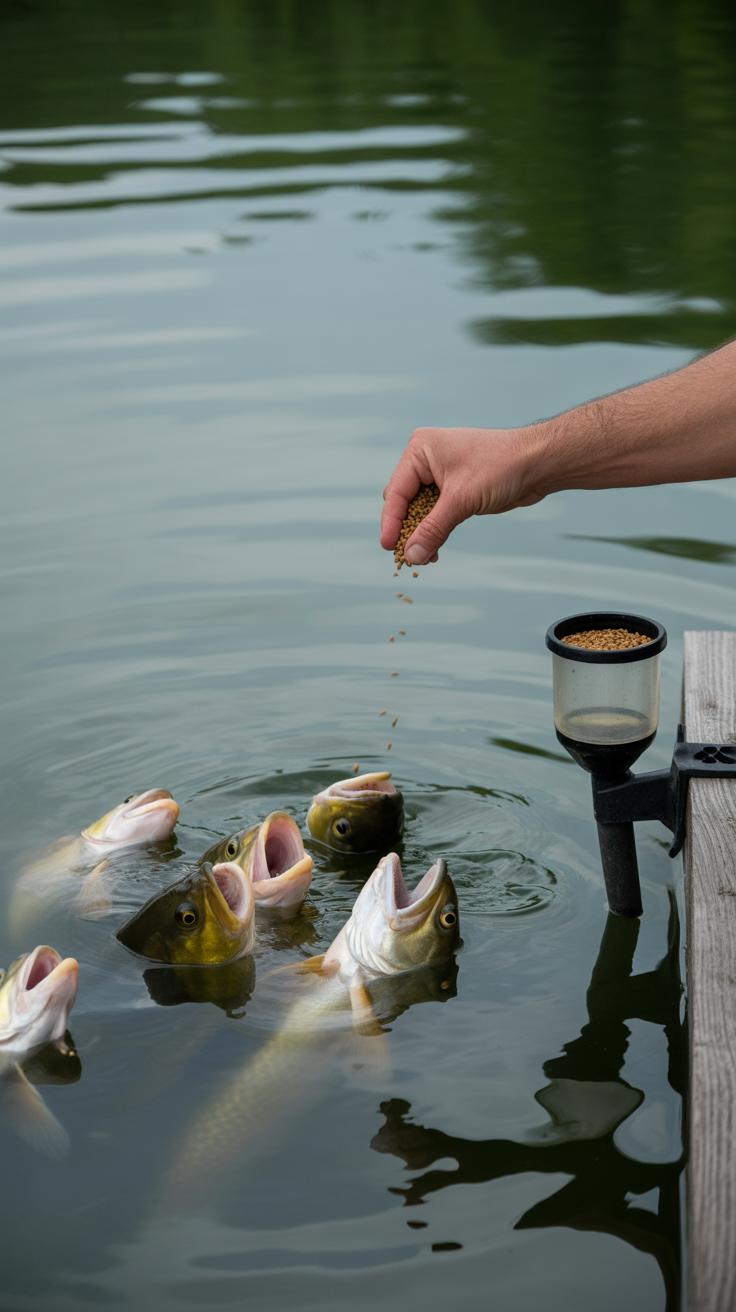
Feeding fish might seem straightforward, but it can quickly affect the pond’s balance if done without care. Many pond owners tend to overfeed, thinking more food means healthier fish, but that’s not really true. Overfeeding can lead to leftover food decaying, which messes with water quality—something you’ve likely been managing already.
Generally, it’s better to feed your fish only as much as they can eat in about five minutes, once or twice a day. In colder months, when fish metabolism slows down, feeding less often—or sometimes not at all—makes more sense. You’ll notice how active the fish are; that little hint tells you if they need food or just aren’t hungry.
As for what to feed them, there are a few good options. Try sinking pellets designed for pond fish, as these reduce the amount of food floating on the surface and rotting. You might also mix in some natural treats like bloodworms, brine shrimp, or even some leafy greens occasionally, especially for species that like vegetation in their diet.
Feeding a mix of protein and plant-based foods helps keep fish healthy, supports growth, and maintains vibrant colors. You could experiment a bit with what your fish enjoy most, but watch how any changes affect your pond’s clarity. Sometimes simplicity works best, but your pond’s unique setup might say otherwise.
Planting And Managing Aquatic Plants
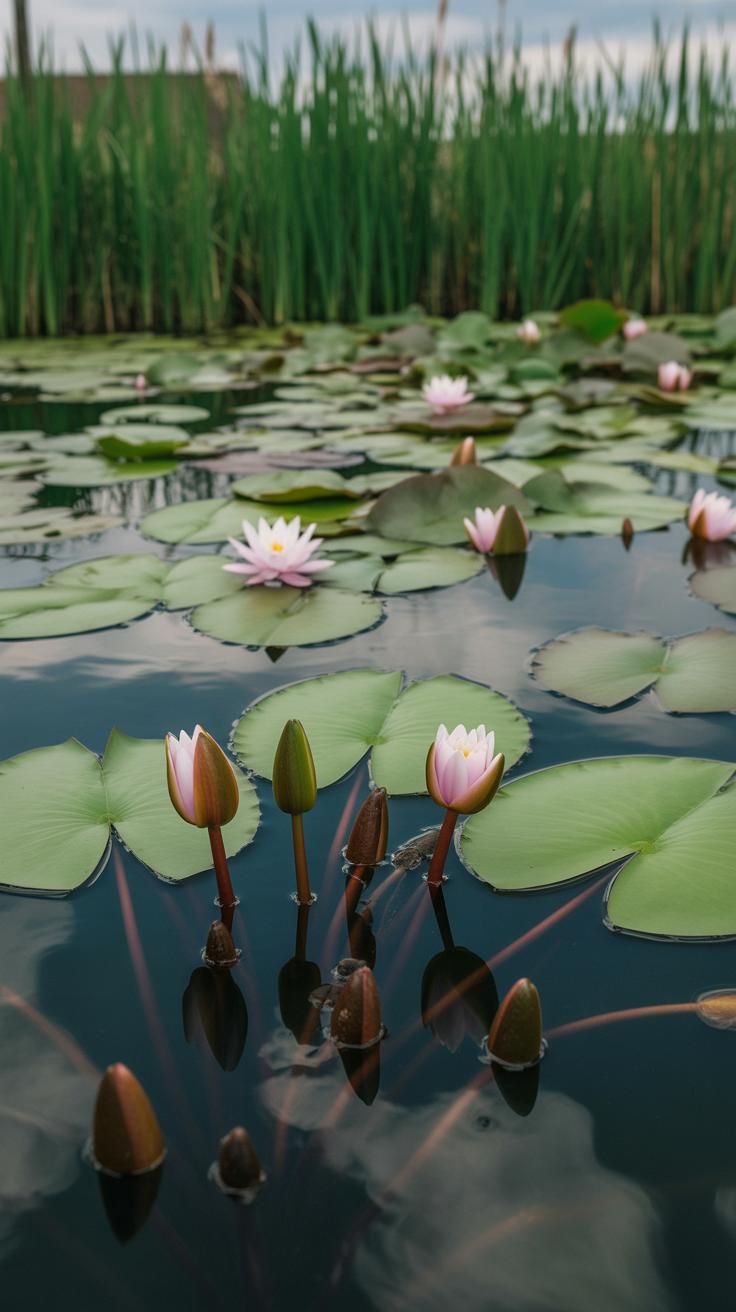
Aquatic plants do more than just decorate your fish pond. They play a key role in balancing the ecosystem and supporting fish health. Plants absorb excess nutrients like nitrogen and phosphorus, which helps keep the water clearer and reduces algae growth. Also, they supply oxygen through photosynthesis, especially during daylight hours, which benefits your fish and other pond life.
Choosing the right plant species makes a noticeable difference. Some popular choices include:
- Water lilies – they shade the pond, keeping water temperature down and providing hiding spots for fish.
- Cattails and bulrush – these marginal plants absorb nutrients and offer shelter for smaller fish and insects.
- Hornwort and elodea – these submerged plants improve oxygen levels and can compete with algae for nutrients.
Still, managing plant growth is a bit of a balancing act. If plants spread too quickly, they might crowd out open water or reduce oxygen at night. Trimming dead leaves and removing excessive growth every few weeks helps keep things in check. Sometimes, thin out fast-growing strands by hand or use barriers to contain rooted plants. It’s a bit of trial and error, but staying watchful prevents your pond from turning into a swamp of weeds. Have you noticed certain plants flourishing more than others in your own pond? That’s usually a sign to adjust what you’re planting or how you’re managing growth.
Controlling Algae And Pests
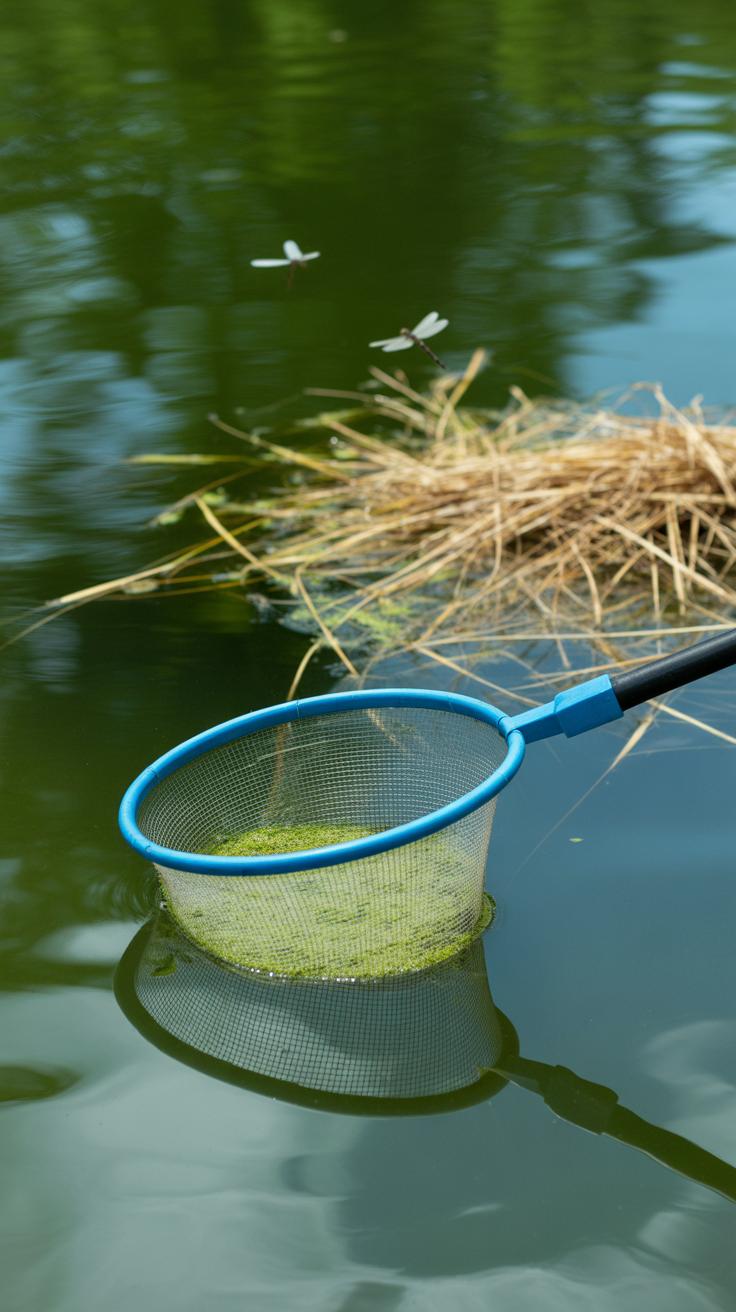
Natural Algae Control Methods
Algae can take over your pond if left unchecked, stealing oxygen and crowding out other life. You might think chemicals are the easiest fix, but they often upset the balance more than help. Instead, try using plants to keep algae in check. Floating plants like water lilies can shade the water, reducing sunlight that algae need to grow. Submerged plants also compete with algae for nutrients, which can limit the algae’s spread.
Another approach is to introduce some gentle shading. A simple way could be installing a pergola or planting trees that cast shade over parts of the pond during the hottest part of the day. This reduces water temperature spikes, which algae love. Keep in mind, though, too much shade might slow plant growth, so it’s a bit of a balancing act. Sometimes, I’ve found that adjusting where the plants grow and how much shade I create takes a few tries to get right.
Dealing With Common Pond Pests
Pests like aphids, water snails, and certain insects can disrupt pond life, feeding on plants or fish eggs. Not every pest is harmful, but some multiply quickly and cause damage. I once battled an unexpected surge of snails that gobbled up my aquatic plants, which was frustrating.
To manage pests effectively, start by encouraging natural predators. Birds, frogs, and dragonflies eat many pests without harming your pond’s balance. You can also hand-pick snails or use barriers to keep them out. Avoid pesticides—they often harm more than just the pests and upset the ecosystem. Sometimes, introducing a few beneficial insects works well, though picking the right ones means knowing your pond’s specific challenge.
Dealing with pests isn’t a one-time fix. It takes observation and patience to find what works best for your setup and your fish pond’s unique conditions. Have you noticed certain pests lurking at particular times? Tracking those patterns can help you respond before problems grow too big.
Maintaining Pond Equipment
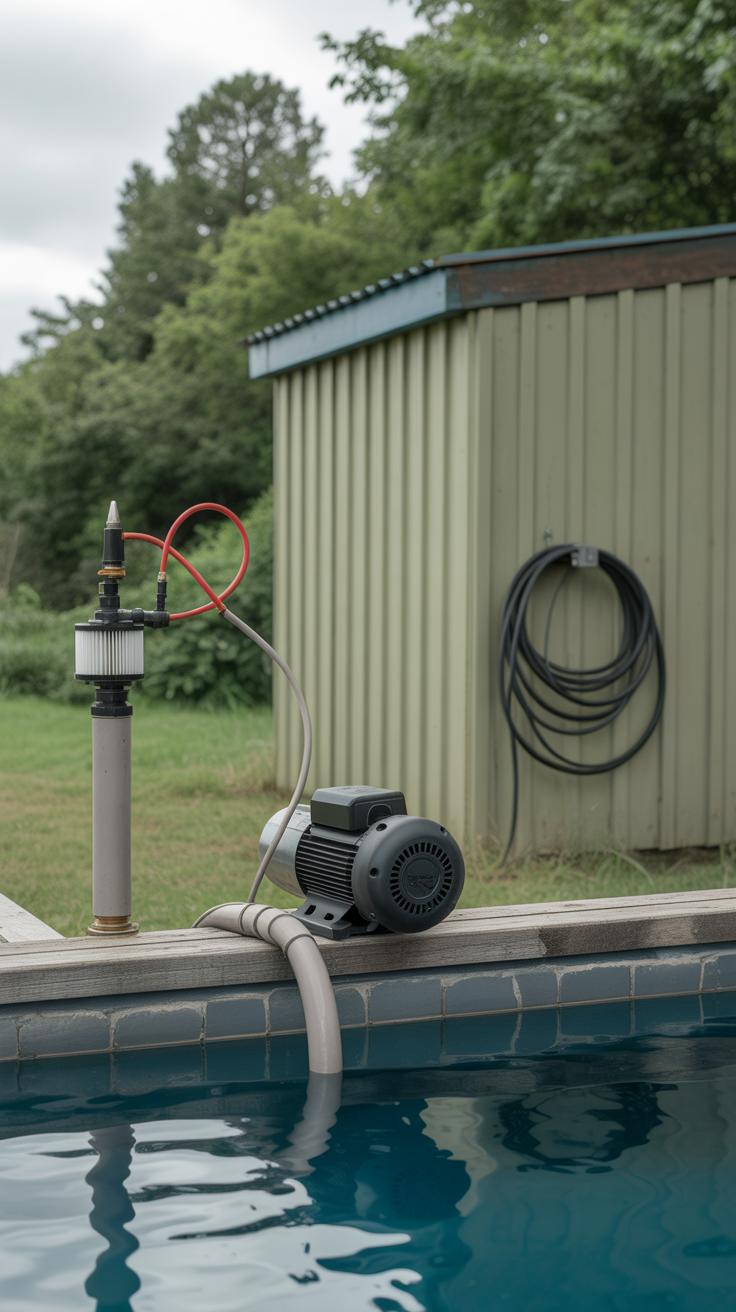
Your pond’s pumps and filters do more work than you might realize. They keep the water moving and clean, which helps maintain a healthy environment for fish and plants alike. Without them running smoothly, stagnant water or buildup of debris can quickly harm the ecosystem.
Filters trap particles and provide surfaces where beneficial bacteria flourish, breaking down harmful substances. Meanwhile, pumps circulate the water, preventing it from becoming oxygen-deprived or murky. If either starts failing, problems can snowball fast.
Cleaning And Checking Filters
Filters need regular attention, but how often depends on your pond’s size and load. I’ve found inspecting the filter every couple of weeks is a good routine, but don’t be surprised if you have to do it more often during heavy leaf fall or after storms.
Simply rinsing filter pads or replacing media when clogged can improve flow dramatically. It’s tempting to just rinse everything with tap water, but sometimes that washes away too much of the helpful bacteria. Using pond water for rinsing strikes a balance—clean enough, yet not too sterile.
Watch out for any tears or cracks in filter housing, since leaks can reduce effectiveness. You might overlook this until flow noticeably slows—maybe a sign to give your filter a proper check.
Pump Care And Upkeep
Pumps seem tough, but they benefit from some basic, consistent care. Clearing debris or stringy algae from intakes prevents blockages that can cause overheating or failure.
Also, remember to check for unusual noises or vibrations, as these can hint at worn bearings or loose parts. Quick fixes often nip bigger breakdowns in the bud.
When winter arrives, removing pumps or using heaters to prevent freezing could save you from costly replacements later. It’s a bit of effort, but with pumps largely responsible for water circulation, skipping care isn’t really an option if you want your pond to thrive year-round.
Seasonal Care For Your Fish Pond
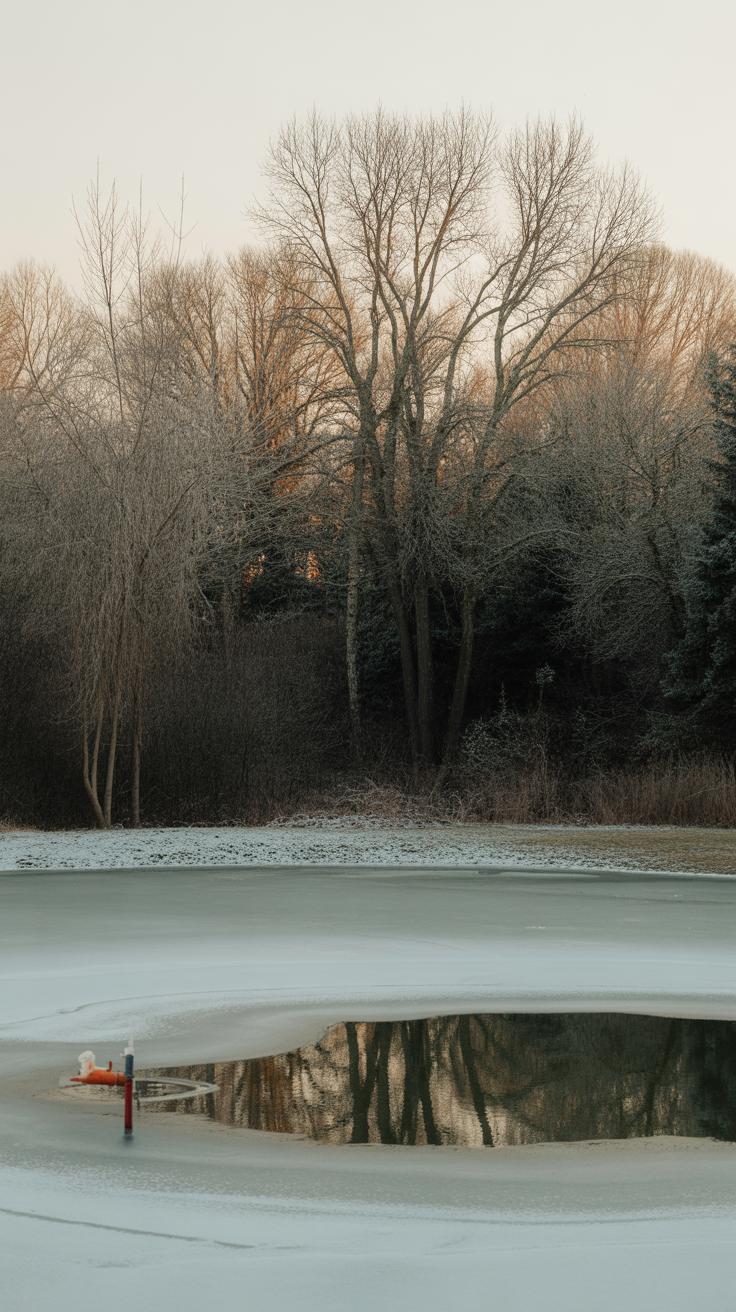
Preparing For Winter
When cold weather approaches, your pond needs special attention to keep fish and plants safe. Start by removing fallen leaves and debris to prevent decay that can lower oxygen levels under ice. If your pond tends to freeze over completely, you might want to add an aerator or pond heater to keep part of the surface open. This helps harmful gases escape and allows oxygen to enter the water.
It’s also a good idea to reduce feeding as fish metabolism slows in cold water—feeding too much can pollute the pond. Take time to inspect and store delicate equipment like pumps and filters if you don’t plan to run them all winter. Yet, some prefer to leave essential systems on to maintain water quality; the choice often depends on how harsh the winter usually gets in your area.
Summer Maintenance Tasks
Summer brings its own challenges. Warmer water holds less oxygen, and fish can get stressed when temperatures spike. Watch pond temperature closely, maybe with a thermometer, and provide shade through floating plants or partial covers. Aeration during hot spells can also help keep oxygen levels up.
Feeding routines change here too; fish tend to eat more actively but be careful not to overfeed. Uneaten food can linger and cause water quality issues quickly in heat. It helps to feed smaller portions more frequently rather than one big meal. Also, keep an eye on algae growth, as nutrients and warmth encourage blooms that can rob the pond of clarity and oxygen.
Have you noticed a subtle shift in your pond’s life between seasons? Often, these small changes are signals on what to tweak next. Paying close attention to these details may keep your pond thriving year-round.
Troubleshooting Common Problems
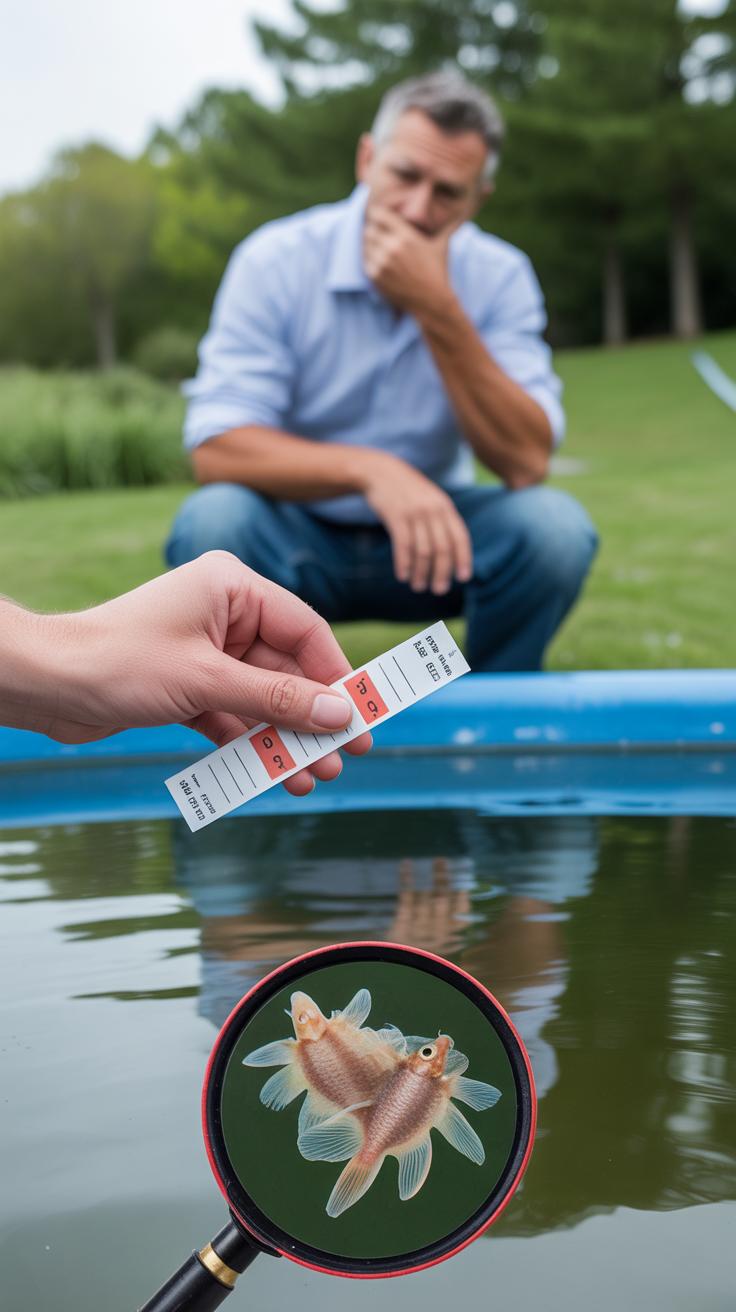
Signs Of Fish Stress And Disease
When your fish start acting strangely, it’s rarely just a minor hiccup. Watch for these signs: erratic swimming, gasping at the surface, faded colors, or clamped fins. Also, look out for lesions, spots, or white patches on their bodies. A sluggish fish avoiding food could mean trouble too. If you notice any of these, test the water right away. Poor water quality often causes stress that leads to disease. Sometimes, quarantining the affected fish helps prevent a wider outbreak. But be cautious—overreacting with medications can upset the pond’s balance. It’s a fine line between helping and overdoing it.
Dealing With Cloudy Or Smelly Water
Cloudy water can be a sign of several issues—excess fish waste, too many nutrients, or even a bacterial bloom. The smell usually comes from decaying organic matter or low oxygen levels. To fix this quickly, start by cleaning debris like fallen leaves or dead plants. Partial water changes make a noticeable difference fast—just don’t replace too much at once. Installing or repairing aeration can boost oxygen and reduce odors. In some cases, adding beneficial bacteria helps settle the water, but don’t rely on that alone. It’s a bit of trial and error, really. You might have to tackle several factors before the water clears and the smell fades, but persistence pays off in the end.
Conclusions
Maintaining a fish pond needs regular care and observation. You must keep water clean, feed fish properly, and manage plants to avoid problems. Healthy fish ponds depend on balance between water, plants, and fish.
By following simple, consistent care tips, your fish pond can thrive year-round. This will provide you with a peaceful, lively place to enjoy nature and support aquatic life.


